Ehlers-Danlos Syndrome, or EDS, is a group of conditions. Issues in the building blocks of connective tissue cause them. This causes some problems in the body's metabolism. Connective tissue keeps our body's structure in shape, especially in muscles and bones.
But it's not just in muscle and bone; it's in many organs and systems. What makes up connective tissue? There are three main things: cells, collagen, and proteoglycans.
The production of collagen is associated with the corresponding gene. Abnormalities in these genes can cause changes in connective tissue that contribute to several diseases and can be passed on to future generations. Collagen is a protein found in almost every body system in the human body and gives tissues resistance to stretching.
Genetic mutations leading to a defect can cause Ehlers-Danlos Syndrome, which usually manifests as excessive joint flaccidity with coexisting disorders in other organs. Changes in collagen cause abnormal structure of joints, tendons, and ligaments, which leads to extreme joint mobility.
More than a dozen subtypes of Ehlers-Danlos Syndrome are distinguished, differing in their symptoms. Every kind of subtype differs in its mutation, the amount of tissues impacted, occurrence, and prognostication. Ehlers-Danlos Syndrome therapy mainly involves recovery to boost muscle power, lessening injury, and joint dislocation hazards. One frequent downside of this illness is the heightened occurrence of deteriorative alterations.
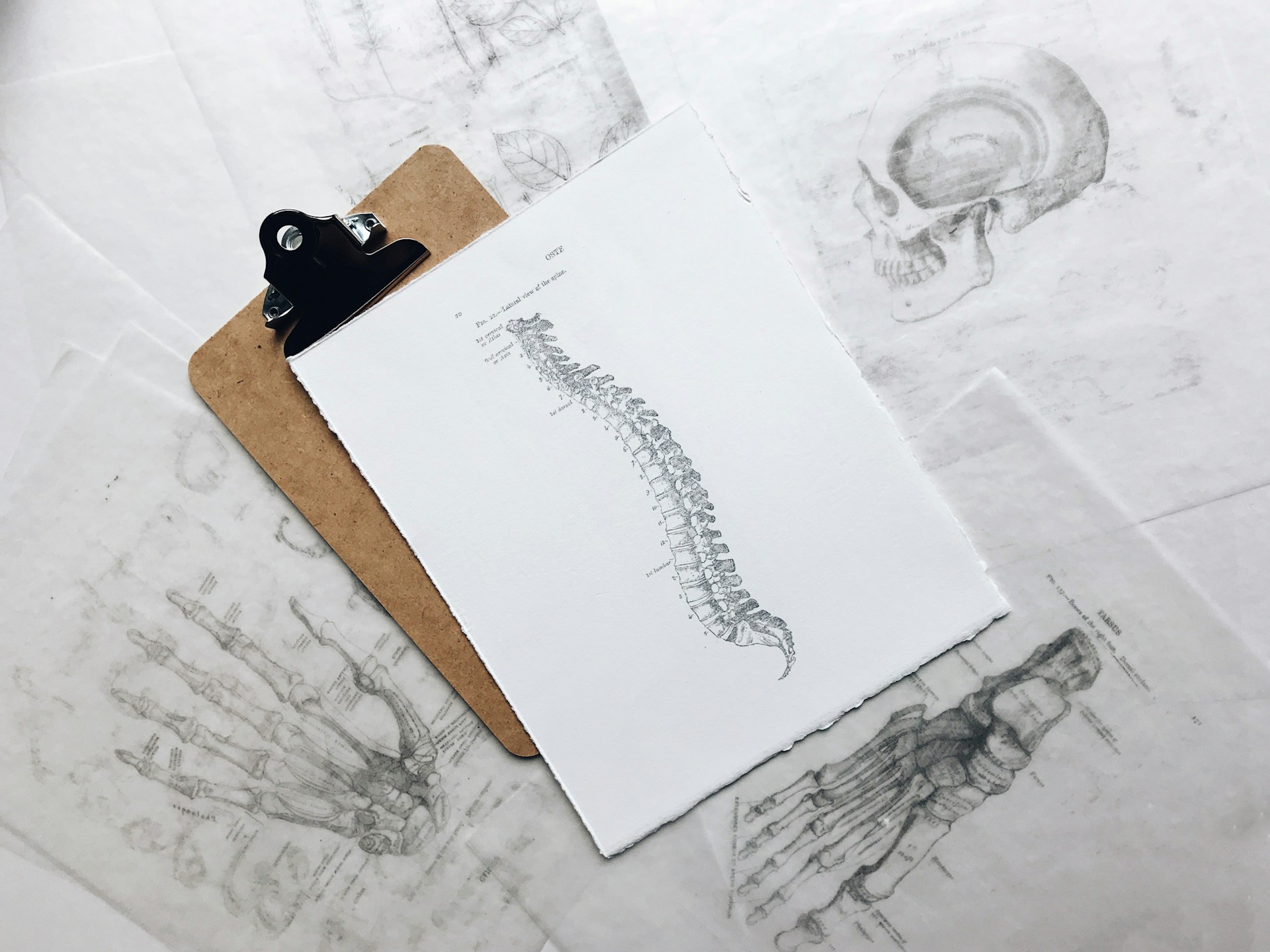
Ehlers-Danlos Syndrome is a group of diseases that differ in their clinical picture. Mutations involved in collagen synthesis and other components of connective tissue cause them. Depending on the mutation present in the patient, symptoms from a specific system predominate.
The mode of inheritance is also not identical in all Ehlers-Danlos Syndromes – some are inherited in an autosomal dominant![]() manner, others in an autosomal recessive
manner, others in an autosomal recessive![]() manner, and in addition, sometimes mutations arise spontaneously, and the disease occurs in a family member in whom it was not observed in earlier generations.
manner, and in addition, sometimes mutations arise spontaneously, and the disease occurs in a family member in whom it was not observed in earlier generations.
In conclusion, genetic mutations![]() in the structure of collagen cause Ehlers-Danlos Syndrome. Collagen belongs to the structural proteins of the extracellular matrix of connective tissue. Its primary function is to provide proper physical strength, mechanical resistance, and tissue elasticity. When collagen is in short supply, tissue flaccidity occurs.
in the structure of collagen cause Ehlers-Danlos Syndrome. Collagen belongs to the structural proteins of the extracellular matrix of connective tissue. Its primary function is to provide proper physical strength, mechanical resistance, and tissue elasticity. When collagen is in short supply, tissue flaccidity occurs.
Skin deprived of collagen loses its elasticity and stability, becomes stretchy, and is prone to mechanical injury and hurt. Difficulties in wound healing are also a direct consequence of reduced amounts of this protein. The joints become unnaturally flexible if the protein is lacking in the cells that make up the joint capsules. Genetic disorders that can cause the disease equally affect men and women.
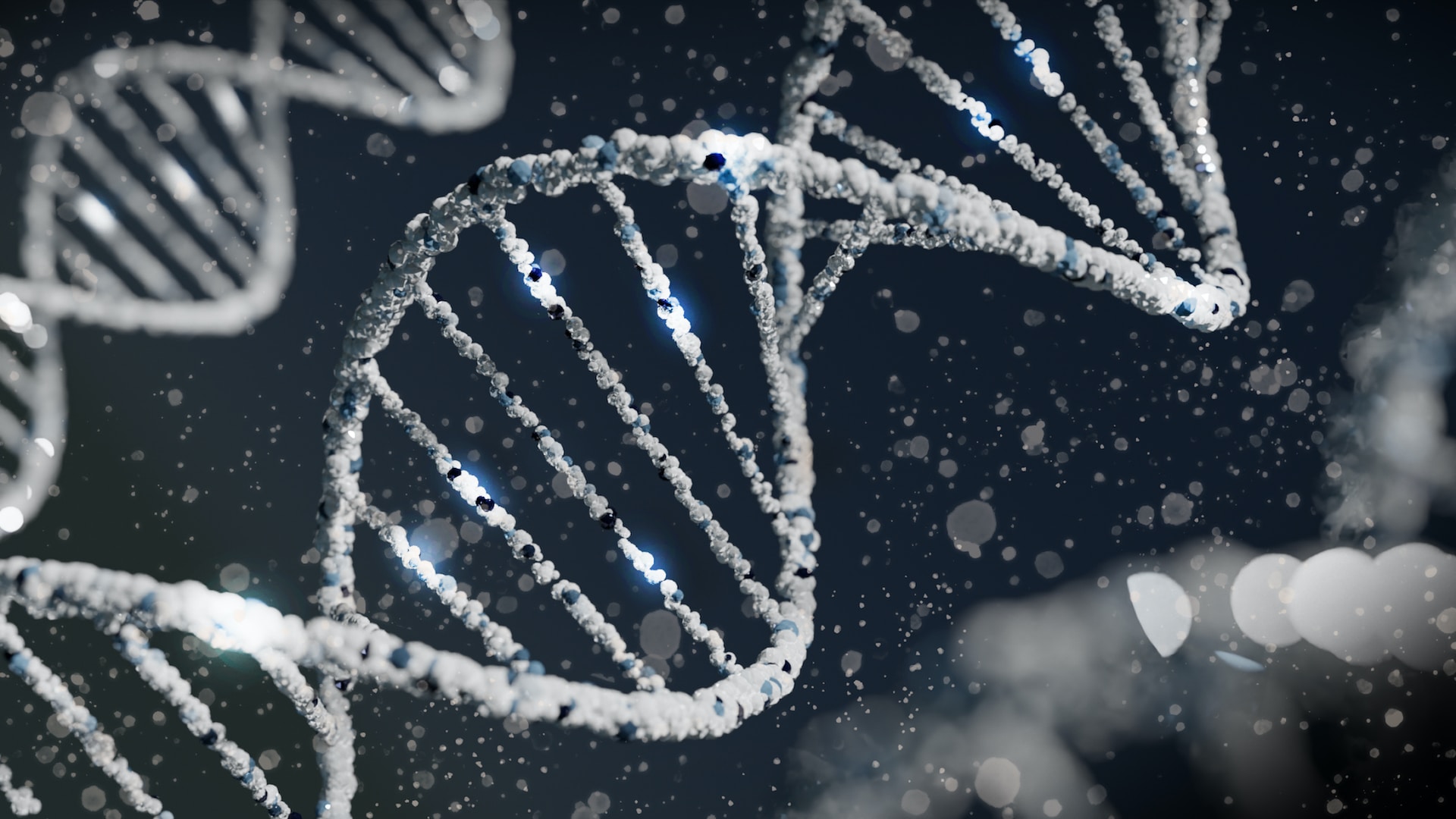
The symptoms present in each syndrome are various. They can be divided into different categories relating to the areas involved in the disease. Each of the 13 Ehlers-Danlos Syndrome types shows unique symptoms. But, common symptoms show up in many Ehlers-Danlos Syndrome types. We call these common symptoms:
Joint symptoms – The leading group of symptoms is the most common. They mainly include hypermobility![]() , a disorder characterized by overextension and, very often, musculoskeletal pain: joint instability and flaccidity cause joint dislocations and subluxations. In patients, the range of motion of the joints is markedly more significant than usual. Joint degeneration and complications from multiple injuries also appear early.
, a disorder characterized by overextension and, very often, musculoskeletal pain: joint instability and flaccidity cause joint dislocations and subluxations. In patients, the range of motion of the joints is markedly more significant than usual. Joint degeneration and complications from multiple injuries also appear early.
Skin symptoms – Very often, the skin in Ehlers-Danlos Syndrome patients is more fragile and prone to damage. The skin may be excessively smooth and silky, sometimes described as translucent. In some types, it also stretches and sags. It takes longer to heal after trauma, and scarring is not uncommon. The skin may also be more prone to bruising, even with minor trauma. Hands and feet have a characteristic wrinkled appearance like seniors due to deep furrows already present at a young age.

Skeletal deformities – Deformities involve both the axial and peripheral skeleton. There is scoliosis, or lateral curvature of the spine, and kyphoscoliosis![]() , or tri-planar curvature, which alters the spine's structure and alignment in all three planes. Often, there are deformities in the feet and toes, as well as scoliosis or valgus of the feet and knees.
, or tri-planar curvature, which alters the spine's structure and alignment in all three planes. Often, there are deformities in the feet and toes, as well as scoliosis or valgus of the feet and knees.
Fragility of blood vessel walls – This symptom is the cause of numerous disorders. In some types of Ehlers-Danlos Syndrome, there may be easy bruising and early formation of lower extremity varicose veins, as well as the occurrence of heart valve defects, formation of aneurysms, life-threatening vessel wall delamination, and rupture, or rupture of said aneurysms. Sometimes, large blood vessels and organs can rupture.
Bone metabolism disorders – Disorders result in early osteopenia and osteoporosis, with an increased risk of low-energy fractures. Osteopenia![]() is a condition of decrease in bone mineral density. It is classified as an early stage of osteoporosis. On the other hand, osteoporosis is a disease that affects the human skeletal system. In the course of this disease, there is a decrease in the density of bones and a disruption in the cohesion of their tissues, which results in a much higher susceptibility to fractures, which can occur even with low loads.
is a condition of decrease in bone mineral density. It is classified as an early stage of osteoporosis. On the other hand, osteoporosis is a disease that affects the human skeletal system. In the course of this disease, there is a decrease in the density of bones and a disruption in the cohesion of their tissues, which results in a much higher susceptibility to fractures, which can occur even with low loads.
Delayed motor development – Ehlers-Danlos Syndrome can appear as early as childhood and cause delayed motor development![]() . Psychomotor retardation is a delay in the development of motor and intellectual functions. We speak of delayed or abnormal development when a child fails to achieve expected skills within a certain period. There is also growth retardation, which results in low height even in adulthood.
. Psychomotor retardation is a delay in the development of motor and intellectual functions. We speak of delayed or abnormal development when a child fails to achieve expected skills within a certain period. There is also growth retardation, which results in low height even in adulthood.
Characteristic features of appearance – Some types of Ehlers-Danlos Syndrome have typical symptoms that relate to appearance. It may be the appearance of the face, such as large eyes, a thin nose, or a specific appearance of the chin and ears. It can also involve the limbs, such as long-term toes or unnaturally long legs.
Internal organ disorders – Disorders result from tissue fragility. They result in an increased tendency to develop diverticula and an increased risk of organ rupture, such as the uterus, during pregnancy. The fragility and tenderness of organs can also cause irritable bowel syndrome.
Eye disorders – Certain Ehlers-Danlos Syndrome types can lead to issues with the eyes. There's a wide array of eye problems. They might include serious sight problems from refractive disease and cross-eyed conditions. Also, there could be issues with the sclera and cornea syndrome![]() . The risk of retina detachment might increase, and the eyeballs could potentially rupture. Along with this, hearing issues might also happen.
. The risk of retina detachment might increase, and the eyeballs could potentially rupture. Along with this, hearing issues might also happen.
Diseases of the teeth and gums – In some cases, there are diseases of the teeth and gums that may not be curable. This group includes congenital disabilities of the palate and teeth and early and severe periodontal diseases that can cause tooth loss.

Currently, 13 types of Ehlers-Danlos Syndrome![]() are distinguished, of which one type does not yet have a specific genetic mutation and has not been thoroughly studied. Every Ehlers-Danlos Syndrome has unique traits along with a different development and outcome. They can often mix. In certain instances, unusual joint flexibility is the primary concern. Yet, the most prevalent form is classic Ehlers-Danlos Syndrome.
are distinguished, of which one type does not yet have a specific genetic mutation and has not been thoroughly studied. Every Ehlers-Danlos Syndrome has unique traits along with a different development and outcome. They can often mix. In certain instances, unusual joint flexibility is the primary concern. Yet, the most prevalent form is classic Ehlers-Danlos Syndrome.
Below are the types of Ehlers-Danlos Syndrome:
A defect in type causes the clay type of Ehlers-Danlos Syndrome type V collagen; the kind of inheritance was defined as autosomal dominant. This type involves the COL5A2![]() , COL5A1
, COL5A1![]() , and, less commonly, COL1A1
, and, less commonly, COL1A1![]() genes. In classic Ehlers-Danlos Syndrome, there is a high variability of symptoms. Because of this variability, EDS is often misdiagnosed.
genes. In classic Ehlers-Danlos Syndrome, there is a high variability of symptoms. Because of this variability, EDS is often misdiagnosed.
It manifests with generalized excessive joint mobility, with a tendency to joint subluxation. The symptoms appear as early as in newborns, affecting the peripheral joints, especially the shoulder, knee, temporomandibular joints, and the spine.
Simultaneous scoliosis and flat feet are common. Musculoskeletal pains accompanying the above changes are often mistakenly considered symptoms of fibromyalgia. The occurrence of recurrent joint effusions is also observed, and less frequently, hemorrhages into common cavities.
The skin in this syndrome type is thin and atrophic, and discoloration is sometimes visible, especially around the forehead, under the chin, and on the limbs. Nodules sometimes form within the skin. Damage to the skin heals very slowly. The Gorlin's sing also manifests excessive tissue distension – the ability to touch the tip of the nose with the tongue.
Patients sometimes develop respiratory symptoms, including spontaneous pneumothorax, pleural or mediastinal emphysema, and the formation of subpleural blisters. There are also changes in the heart valves. Excessive joint mobility often causes symptoms of peripheral neuropathy.

Changes in the TNXB![]() gene likely cause this type of syndrome. It is inherited autosomal recessive, which means that both alleles of the gene must encode the trait. Symptoms of this type include excessive stretching of the skin. Thus, like the classic type, the skin has a velvety texture.
gene likely cause this type of syndrome. It is inherited autosomal recessive, which means that both alleles of the gene must encode the trait. Symptoms of this type include excessive stretching of the skin. Thus, like the classic type, the skin has a velvety texture.
There is often easy bruising of the skin, and hyperpigmentation may also appear. There is a lack of atrophic scarring. In addition to this classical-like type, it is characterized by generalized joint hypermobility. Recurrent dislocations are common, most often in the neck and ankles.
Hypermobile Ehlers-Danlos Syndrome is a type that is not yet well understood in terms of genes and actions. There is no genetic test available to detect this type of Ehlers-Danlos Syndrome. Diagnosis is based solely on the patient's history and physical characteristics. It makes proper diagnosis of Ehlers-Danlos Syndrome much more difficult.
The hypermobile type is mainly characterized by hypermobility involving small and large joints. It very often causes joint dislocations and subluxations. The skin in this type is soft and velvety and bruises easily. There may also be chronic bone and muscle pain. In addition to this, there are also problems with healing.
This type of Ehlers-Danlos Syndrome involves type III collagen and type I collagen. Changes in the COL3A1 gene can cause it. In addition, it can also be caused by changes in the COL1A1![]() gene. The mode of inheritance is autosomal dominant.
gene. The mode of inheritance is autosomal dominant.
The characteristic symptom of this type is very tender skin. The skin is thin, transparent, and prone to damage. The fat under this layer is lesser. Vital blood vessels and organs can easily rupture, and the hair tends to be thin and weak. Those with this syndrome often have distinctive facial characteristics![]() , such as large eyes, delicate noses, lips, and ears without flaps. They may also have a small chin and deep-set cheeks.
, such as large eyes, delicate noses, lips, and ears without flaps. They may also have a small chin and deep-set cheeks.
Increased mobility often impacts their small joints, especially the fingers and toes. A condition called clubfeet may also happen at birth, where the foot and front part of the foot are in a permanently bent position. Other issues that may arise include tendon breaks, muscle tears, skin aging sooner than expected, and varicose veins at an early age. They may also suffer from additional conditions such as pneumothorax and gum recession.

Changes in either the PLOD1![]() gene or the FKBP14
gene or the FKBP14![]() gene cause Kyphoscoliosis EDS. It involves the enzyme collagen, specifically lysine hydroxylase. Kyphoscoliosis manifests itself at birth in the form of hypotonia
gene cause Kyphoscoliosis EDS. It involves the enzyme collagen, specifically lysine hydroxylase. Kyphoscoliosis manifests itself at birth in the form of hypotonia![]() . Hypotonia, in short, is hypotension. It is a condition in which systolic blood pressure is below standard. In addition to it, there is delayed motor development and scoliosis, which progresses with age.
. Hypotonia, in short, is hypotension. It is a condition in which systolic blood pressure is below standard. In addition to it, there is delayed motor development and scoliosis, which progresses with age.
Scoliosis is a deformity of the spine, where instead of a curve with a gentle curve, it takes the type of the letter S. Scoliosis usually involves the thoracic spine and upper back. Patients with this type of EDS also bruise frequently, and their arteries are prone to rupture. In addition, there is low bone density or osteopenia. Characteristic features include abnormally long-term toes and unusually long limbs. In addition, the chest is sunken or protruding.
Changes in genes such as COL1A1 and COL1A2 provide Arthrochalasia. It affects type I collagen. Joint hypermobility is present in this type. Patients have congenital dislocation of the hip condition. This condition is a lesion in which there is a temporary or permanent loss of contact of the articular surfaces with each other or displacement of the bones in the joint capsule.
The skin is elastic, fragile, and bruises easily. In addition to it, there is also hypotonia and kyphoscoliosis, or kyphosis, combined with scoliosis. Kyphosis is the spine's natural curvature, an arched curve towards the dorsal side. Osteopenia may also occur.
Dermatosparaxis is autosomal recessively inherited. This type occurs due to changes in the ADAMTS2![]() gene. It appears exceptionally rarely. Symptoms usually involve the skin. The skin is very tender and fragile. It causes bruising and scarring. The skin can also be saggy, especially on the face. In addition to it, there is also hypermobility and hernias.
gene. It appears exceptionally rarely. Symptoms usually involve the skin. The skin is very tender and fragile. It causes bruising and scarring. The skin can also be saggy, especially on the face. In addition to it, there is also hypermobility and hernias.
EDS (previously classified as type 7C) is associated with particularly fragile skin, leading to severe bruising and scarring; sagging, redundant skin, especially on the face; mild to severe hypermobility; and hernias. A hernia is a pathological protrusion of the contents of a body cavity through an opening in the shell in a location called a site of decreased resistance. It most often occurs in the abdominal cavity.
Changes in the PRDM5![]() gene and the ZNF469
gene and the ZNF469![]() gene cause brittle corneal syndrome—autosomal recessive inheritance. The main symptoms are related to the cornea. This type is characterized by progressive corneal thinning. Keratosis progresses early and results in myopia and hearing loss. Classic signs such as hypermobile joints and hyperelastic skin are also often observed.
gene cause brittle corneal syndrome—autosomal recessive inheritance. The main symptoms are related to the cornea. This type is characterized by progressive corneal thinning. Keratosis progresses early and results in myopia and hearing loss. Classic signs such as hypermobile joints and hyperelastic skin are also often observed.
Transformations in the two versions of the B4GALT7![]() gene trigger EDS syndrome of spondylodysplastic type. Changes in B3GALT6 and SLC39A1 genes could lead to unique instances. Signs start showing up early in life. Notably, affected individuals have a shorter height.
gene trigger EDS syndrome of spondylodysplastic type. Changes in B3GALT6 and SLC39A1 genes could lead to unique instances. Signs start showing up early in life. Notably, affected individuals have a shorter height.
Also, a decrease in muscle tone and bending of limbs are typical. Moreover, patients could experience kyphoscoliosis, tapering toes, bone density loss, aortic bulge, and respiratory complications. Its different symptoms include bulging eyes, wrinkled hands, narrowed fingers, and hypermobility of distal joints.
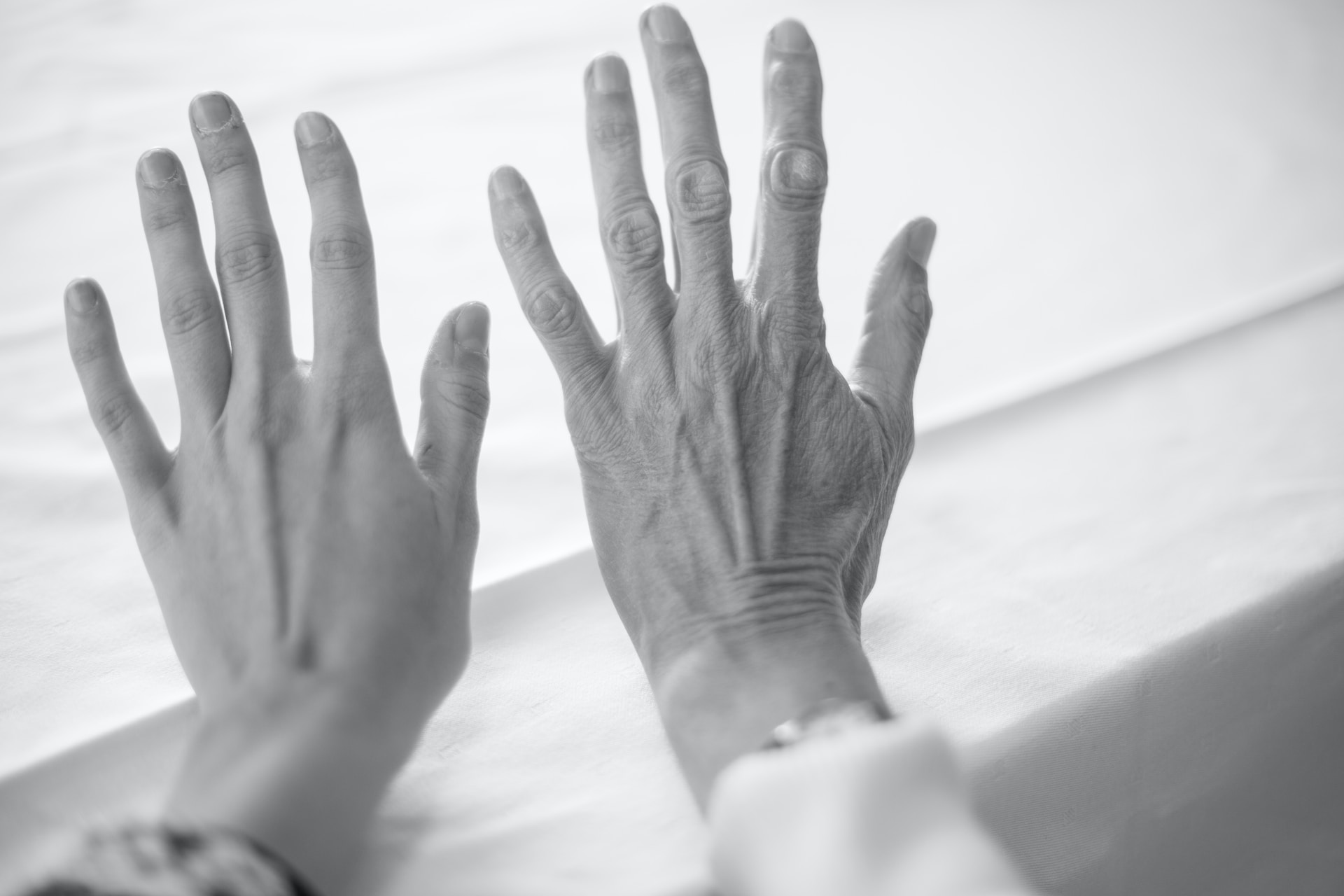
Changes in the DSE![]() gene likely cause musculocontractural EDS. Adduction-flexion contractures are characteristic of this type. Musculocontracture is an unpleasant pathology of the musculoskeletal system involving the inability to stretch a muscle completely.
gene likely cause musculocontractural EDS. Adduction-flexion contractures are characteristic of this type. Musculocontracture is an unpleasant pathology of the musculoskeletal system involving the inability to stretch a muscle completely.
There is also the occurrence of clubfoot. Patients are characterized by craniofacial features evident at birth or early infancy. There is also excessive stretching of the skin, which is fragile and prone to scarring. There is increased wrinkling of the hands and bruising of the skin.
Myopathy can be inherited in both – an autosomal dominant or autosomal recessive manner. This type requires further testing to verify the presence of mutations in the COL12A1![]() gene. Myopathy includes congenital muscle hypotonia, as well as muscle atrophy. In addition to this, joint contractures and hypermobility can be seen. Hypermobility affects the distal joints, i.e., ankles, wrists, feet, and hands.
gene. Myopathy includes congenital muscle hypotonia, as well as muscle atrophy. In addition to this, joint contractures and hypermobility can be seen. Hypermobility affects the distal joints, i.e., ankles, wrists, feet, and hands.
Periodontal EDS is inherited autosomal dominantly. It is likely caused by mutations in the C1R![]() or C1S
or C1S![]() genes affecting the C1r protein. In this type, there is severe periodontitis, which is untreatable. Periodontitis is a disease in which the tissues surrounding the tooth are destroyed, namely the periodontium, bone, and gingiva.
genes affecting the C1r protein. In this type, there is severe periodontitis, which is untreatable. Periodontitis is a disease in which the tissues surrounding the tooth are destroyed, namely the periodontium, bone, and gingiva.
The main factor of periodontitis is bacteria residing in plaque and periodontal pockets. This ailment has an early onset, appearing in childhood or adolescence. This type is also characterized by a lack of gingival attachment, which means progressive destruction of the tissues surrounding the tooth.
Cardio-valvular EDS is an autosomal recessive disorder inherited by altering both alleles of the COL1A2![]() gene. It presents with progressive cardiac and valvular problems. The heart valves are responsible for the normal flow of blood through the heart. The most common symptoms of a damaged seph valve are easy fatigue, persistent dry cough, and recurrent bronchitis. There is also excessive stretching of the thin skin, which is prone to bruising and blisters. In addition, there is hypermobility of minor joints.
gene. It presents with progressive cardiac and valvular problems. The heart valves are responsible for the normal flow of blood through the heart. The most common symptoms of a damaged seph valve are easy fatigue, persistent dry cough, and recurrent bronchitis. There is also excessive stretching of the thin skin, which is prone to bruising and blisters. In addition, there is hypermobility of minor joints.

The differential diagnosis of the syndromes discussed is often challenging. The different types of syndrome, such as Ehlers-Danlos Syndrome, may be associated with each other; some of their symptoms are also seen in cases of Marfan syndrome![]() .
.
The differential diagnosis should also consider other rarer diseases related to defects of connective tissue elements genetically determined. Noticing the symptoms of Ehlers-Danlos Syndrome by the patient or those around him requires a doctor's report.
The first diagnostic method is an interview with the patient, considering the symptoms present. Genetic testing cannot confirm some types of Ehlers-Danlos Syndrome, so a detailed history and exclusion of different diseases are critical to diagnosing. Functional additional tests and methods in diagnosing Ehlers-Danlos Syndrome include:

Beighton's Scale test – Very helpful in history and diagnosis. EDS is the Beighton Scale![]() examination. According to this scale, excessive joint mobility is indicated by specific criteria. These belong to the ability to draw the thumb passively to the forearm and bend dorsally at the metacarpophalangeal joint passively. Further observed is an extended stretch at both the elbow and knee joints, with the hands resting directly on the floor as one leans forward with straight knee joints. In assessing the patient, the doctor looks for any changes in joints and the spine.
examination. According to this scale, excessive joint mobility is indicated by specific criteria. These belong to the ability to draw the thumb passively to the forearm and bend dorsally at the metacarpophalangeal joint passively. Further observed is an extended stretch at both the elbow and knee joints, with the hands resting directly on the floor as one leans forward with straight knee joints. In assessing the patient, the doctor looks for any changes in joints and the spine.
Genetic testing – Detecting and recognizing specific gene alterations through genetic testing is crucial to affirming the diagnosis. An exception is witnessed in Ehlers-Danlos Syndrome, where high joint movement is present, diagnosed exclusively by evaluating clinical symptoms. The diagnosis of EDS syndrome is based on genetic testing of collagen synthesis and processing pathway genes. The test is done by molecular analysis of DNA isolated directly from the patient's peripheral blood. Genetic testing is currently a definitive test.
Skin biopsy – Another helpful test in diagnosing Ehlers-Danlos Syndrome is a skin biopsy. Skin biopsy is a test that involves taking a small section of the skin affected by a lesion for histopathological examination. It makes it possible to diagnose skin lesions and thus confirm the suspected disease or rule it out completely. On average, a skin biopsy takes only a few minutes and requires no special preparation. After it is performed, the patient can immediately return to daily activities.
Neurological examination – A neurological exam is often indicated; multiple specialized tests related to organ symptoms are necessary in some types. This is because neurological abnormalities can occur in the syndrome. Often diagnosed neurological disorders are headaches of various origins, hypersensitization, or hypersensitivity.
Imaging examinations – Tests like X-rays, CT scans, ultrasounds, and echocardiography play a supporting role. They shed light on alterations in our body parts. We rely on them when dealing with health issues tied to certain organs, such as stomach bleeding.
Ophthalmologic examinations – Eye checks are common. This is because some folks with Ehlers-Danlos Syndrome experience eye issues. An eye check tests the health of our visual system. It's performed by a specialist with unique tools and equipment. Among other things, the essential examination allows assessment of visual acuity, detection of certain diseases, measurement of intraocular pressure, and abnormalities in the components of the eyeball.
Dental checkups – are often necessary because some types of Ehlers-Danlos Syndrome have gum and tooth disease. Among other things, the dentist can confirm periodontitis. It is an infection of the periodontal tissues, which, in some situations, can cause loosening and loss of teeth. Also, in the syndrome, there are often problems with tooth decay.
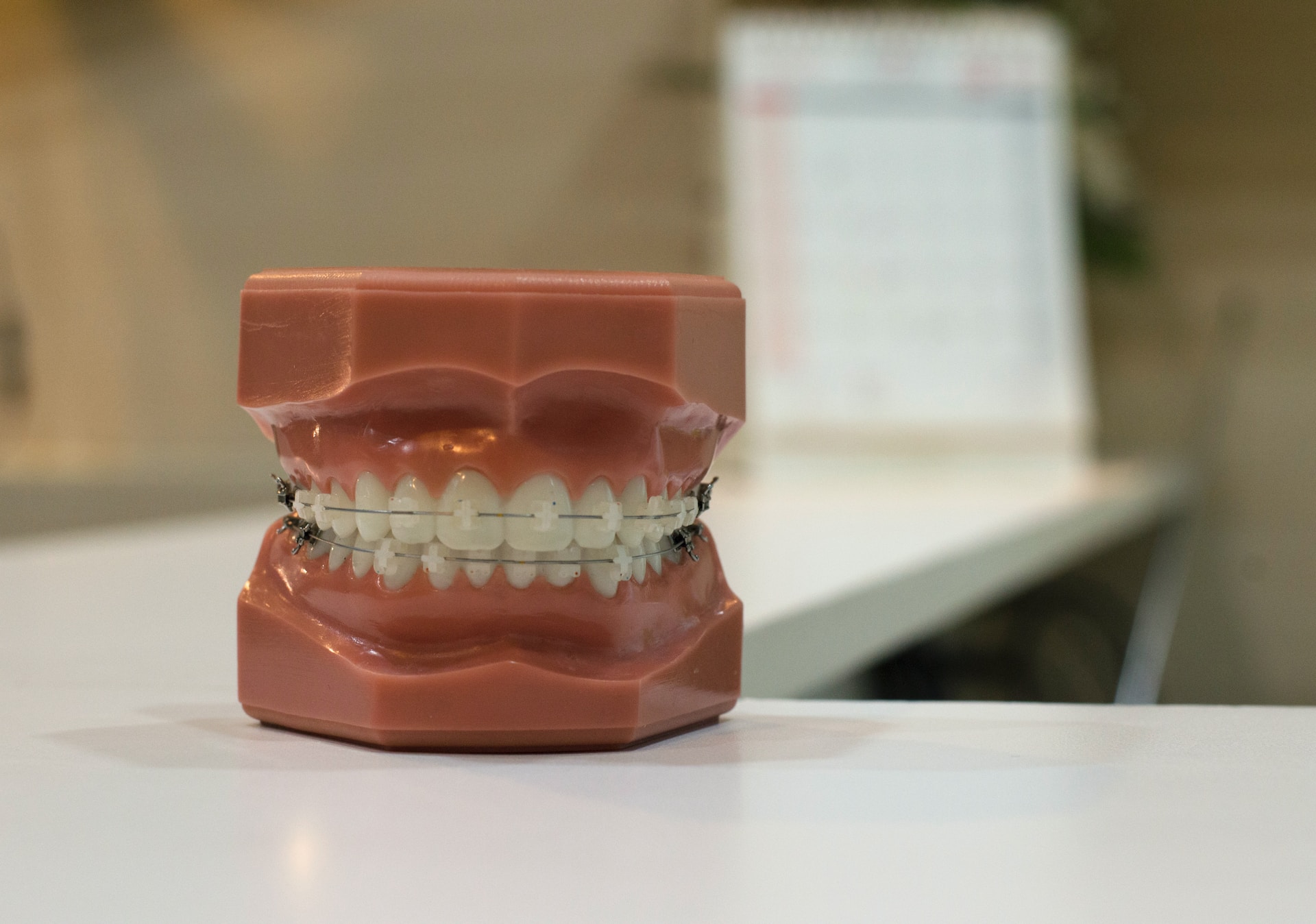
A complete cure for Ehlers-Danlos Syndrome is not possible. Only symptomatic treatment can be used. The course of Ehlers-Danlos Syndrome and the survival time of patients cannot be predicted; they depend on the type of the disease, organ manifestations, and complications.
Ehlers-Danlos Syndrome causes lesions affecting numerous organs and systems. Then, the number and variety of therapeutic interventions that may be necessary are very long-term and involve many medical specialties. Therapeutic approaches used to treat Ehlers-Danlos Syndrome include:
Physiotherapy – In patients with excessive joint mobility, muscle strengthening exercises are used, thus achieving functional joint stabilization. Mainly, kinesiotherapy![]() aims to increase muscle strength to help stabilize the joints. Sometimes, orthopedic supplies should be used to facilitate mobility, and then, in the most severe cases, orthopedic surgery is necessary.
aims to increase muscle strength to help stabilize the joints. Sometimes, orthopedic supplies should be used to facilitate mobility, and then, in the most severe cases, orthopedic surgery is necessary.
Pharmacotherapy – In the predominantly kyphoscoliosis type, large doses of vitamin C, which affects enzymatic disorders, can be used. In other classes, non-steroidal anti-inflammatory analgesic drugs are used. When the patient has osteoporosis and pathological fractures, anti-osteoporotic medications are used.
Surgical procedures – In case of severe complications, appropriate life-saving surgical procedures are performed. Cardiac or vascular surgery interventions may be necessary for cardiovascular system lesions. Also standard are joint dislocations requiring surgery. However, significant tissue fragility makes doing surgery difficult.

Ehlers-Danlos Syndrome requires accurate diagnosis because it contains a wide range of diverse symptoms that can be misdiagnosed as different diseases. Patients with Ehlers-Danlos Syndrome may be diagnosed with many other conditions before they get a proper diagnosis. Often, it is coexisting conditions![]() that present with Ehlers-Danlos Syndrome as symptoms.
that present with Ehlers-Danlos Syndrome as symptoms.
Conditions that give similar symptoms to Ehlers-Danlos Syndrome include:
Fibromyalgia is classified as a group of rheumatic diseases of soft tissues, i.e., it is based on inflammation, and the symptom is pain in periarticular tissues, i.e., muscles and tendons that run with possible restriction of joint mobility.
The primary and very troublesome symptom for patients is generalized muscle and joint pain practically throughout the body, associated with a nervous system that is overly sensitive to stimulus stimulation. The discomfort is usually long-lasting; joint stiffness may or may not come along with it. Additional signs may include constant tiredness, upset stomach, severe headaches, and irregular heartbeats.
As a result, Fibromyalgia often gets mistaken for Ehlers-Danlos Syndrome due to similar symptoms. Genetic testing could certainly help to exclude that ailment. Fibromyalgia probably results from matching genetic issues. Accompanying conditions could delay pinpointing the correct diagnosis. Rheumatoid arthritis often exists alongside Fibromyalgia, it is not an uncommon pairing.

Fatigue accompanies each of us. Very often, it is a symptom accompanying many diseases. Still, there are times when it is the primary source of suffering and, along with other symptoms, makes up the clinical picture of a disorder known as chronic fatigue syndrome or chronic fatigue.
Symptoms include constant over time or repeated episodes of feeling severely tired lasting six months or longer, chronic muscle and joint pain, and migraines. Therefore, Chronic Fatigue Syndrome can be confused with Ehlers-Danlos Syndrome.
An essential part of a correctly performed diagnosis is to make sure that there are no exclusion criteria in the clinical picture of the patient's condition, that is, criteria whose presence prevents a diagnosis of chronic fatigue syndrome and instead prompts a second look at the patient's symptoms for a possible diagnosis of a different disorder.
Depression, a depressive episode, is a mental disorder belonging to the group of mood disorders. The causes of depression are varied, and the interaction of many factors can cause its occurrence. Depressive disorders are characterized by, among other things, a drop in mood, an inability to feel pleasure from things that once brought joy, a loss of interest, and a lack of motivation to do things.
Loss of energy and exhaustion, as well as experiencing physical pain, are symptoms that appear in both depressions in EDS. Depression is also a co-occurring disorder with Ehlers-Danlos Syndrome. People with EDS are more prone to various mental disorders, including anxiety disorders. Therefore, psychological therapy is often an additional form of treatment for people with Ehlers-Danlos Syndrome.
It is important to remember that untreated depression will not pass on its own, and its symptoms will only worsen. The consequences of untreated depression can pose an immediate threat to the life of the sufferer.
Hypochondria is understood as the belief that a disease exists or that one has factors that predispose one to contracting a severe illness. A person who suffers from this type of anxiety about his health is called a hypochondriac. It is also colloquially referred to as a person who invents illnesses despite the absence of legitimate symptoms indicating the development of any condition.
A hypochondriac tends to observe their own body overly, treating minor imperfections as a symptom of a severe illness. It is characterized by an exaggerated concern for their health, a focus on health, monitoring their body, and a panicky fear for their life and health.
People with Ehlers-Danlos Syndrome are more likely to develop hypochondria due to constant symptoms that they cannot find the cause of. Also, people who only suffer from hypochondria may confuse their symptoms with Ehlers-Danlos Syndrome.
In practice, postural orthostatic tachycardia syndrome is a condition with a significant increase in heart rate during the transition from lying to standing. This response is disproportionate to the body's standard physiological reaction, which can result in various, often bothersome symptoms.
POTS syndrome is associated with malfunctioning of the autonomic nervous system, which oversees vital bodily functions independent of our conscious control, such as heart rate and blood pressure. Postural orthostatic tachycardia syndrome is characterized by a variety of signs that can vary from patient to patient.
Symptoms that occur while standing mostly include palpitations, accelerated heart rate, and shortness of breath. POTS is a syndrome that can be confused with or co-occur with Ehlers-Danlos Syndrome.

Migraine is one of the more common neurological diseases and primary headaches. A migraine is defined as a paroxysmal, throbbing headache. The pain is localized unilaterally, is of moderate to severe intensity, and intensifies during routine physical activity and strong emotions. After the pain attack ends, patients experience no symptoms.
Migraine often co-occurs with Ehlers-Danlos Syndrome. The migraine diagnosis is mainly based on information from the patient's medical history and special physical examination. To make the diagnosis, the headache should meet the relevant criteria. If there is any doubt about the diagnosis, an EEG is done.
Tachycardia is an acceleration of the heart rate above 100 beats per minute. Tachycardia can be steady, meaning there are the same intervals between heartbeats, or irregular, when the intervals between heartbeats are various. Irregular supraventricular rhythms include, but are not limited to, atrial fibrillation.
In supraventricular tachycardias, the picture can range from no symptoms to loss of consciousness. Heart palpitations can occur in healthy people due to physiological fatigue or emotional stress. Still, if palpitating episodes recur or last for a long-term period, a doctor should be consulted.
Tachycardia is often diagnosed in people with Ehlers-Danlos Syndrome. Determining the cause of tachycardia is crucial in the diagnosis. The doctor determines tachycardia based on a history taken, a physical examination of the patient, and the primary method of detecting changes in cardiac function, which is electrocardiography.
A symptom of cervical spine instability can be recurrent, chronic head and neck pain. To diagnose it, a review X-ray should be taken. The instability of the cervical spine in children is sporadic. If there is instability, it is usually caused by trauma.
Spinal instability is one of the causes of head, neck, and back pain. Cervical instability can produce a variety of symptoms. One of the most common will be recurrent headaches or dizziness. In addition, neck and shoulder girdle pain may occur. The disease may be confused with or co-occur with Ehlers-Danlos Syndrome.
MCAS is a syndrome being diagnosed with increasing frequency. Patients complain of relatively nonspecific symptoms, claiming they already react to virtually everything. Many patients do not get a proper diagnosis for years. The disease causes many unpleasant symptoms involving various organs and body areas.
As the name suggests, it is a specific body condition in which mast cells are over-activated. Abnormal mast cell activity is confirmed in many diseases and dysfunctions of the body: allergies, headaches, irritable bowel syndrome, reactions to gluten unrelated to celiac disease, psychiatric disorders, sinusitis, skin diseases, and even osteoporosis or interstitial cystitis. The wide range of symptoms means that MCAS is often confused with Ehlers-Danlos Syndrome.

Irritable bowel syndrome belongs to the set of common functional disorders of the gastrointestinal tract. Irritable bowel syndrome is a lasting condition that repeatedly causes belly pain. These pains aren't typical, popping up in different locations, mostly in the lower stomach area. They often increase after meals.
Alongside this, other digestive issues may also appear. It's not rare for people with this condition to experience things beyond stomach problems, like persistent tiredness, headaches, migraines, trouble with sleep, and aches in muscles. Therefore, irritable bowel syndrome resembles Ehlers-Danlos Syndrome and often co-occurs with it.
Multiple sclerosis is a disease with a chronic and progressive course. It affects the central nervous system, that is, the brain and spinal cord. During the illness, there is diffuse atrophy of the myelin sheaths of nerve fibers, or demyelination. Due to such changes, foci of damage appear in the brain and spinal cord. These can result in various neurological symptoms.
Multiple sclerosis can cause ophthalmic symptoms, sensory disturbances, and impaired motor coordination. Therefore, it can resemble EDS. The difference is that Multiple Sclerosis usually develops after the age of 20. In addition, in the early stages of multiple sclerosis, once the symptoms have subsided, most of the complications withdraw almost wholly. A thorough medical history should distinguish between the two diseases.
Ehlers-Danlos Syndrome and pregnancy are associated with high risks. Special attention is required for women during pregnancy, which is associated with many risks. Obstetric complications![]() such as uterine rupture during delivery, vaginal and perineal damage, bleeding, and rupture of blood vessels and the large intestine in the postpartum period can be expected. It is recommended to terminate the pregnancy by cesarean section. In the children of these women, already in the neonatal period, increased joint mobility is found.
such as uterine rupture during delivery, vaginal and perineal damage, bleeding, and rupture of blood vessels and the large intestine in the postpartum period can be expected. It is recommended to terminate the pregnancy by cesarean section. In the children of these women, already in the neonatal period, increased joint mobility is found.

Ehlers-Danlos Syndrome is a little-known and often unrecognized disease entity. EDS encompasses a group of diseases caused by genetically determined defects in collagen and metabolic abnormalities within the connective tissue. Individuals with excessive joint mobility often present with the following musculoskeletal complaints and symptoms: common and muscle pain symptoms of joint damage caused by injury or overload.
There are 13 types of Ehlers-Danlos Syndrome. Each is characterized by different signs and the gene causing the disease. Patients require multispecialty medical care throughout their lives. The prognosis of patients with EDS depends on the type of syndrome. Differential diagnosis of the syndromes in question is often challenging. The different kinds of Ehlers-Danlos Syndrome can be associated with each other, and some of their symptoms are also observed in cases of Marfan syndrome.
The differential diagnosis should also consider other rarer diseases related to defects of connective tissue elements that are genetically determined. Noticing symptoms of Ehlers-Danlos Syndrome by the patient or those around him requires a report to the doctor. Treatment usually includes physiotherapy, drug therapy, and surgery.
Table of Contents

Collagen is an important building block. As a supplement or dietary ingredient, it also has many health benefits. Find out… read more »
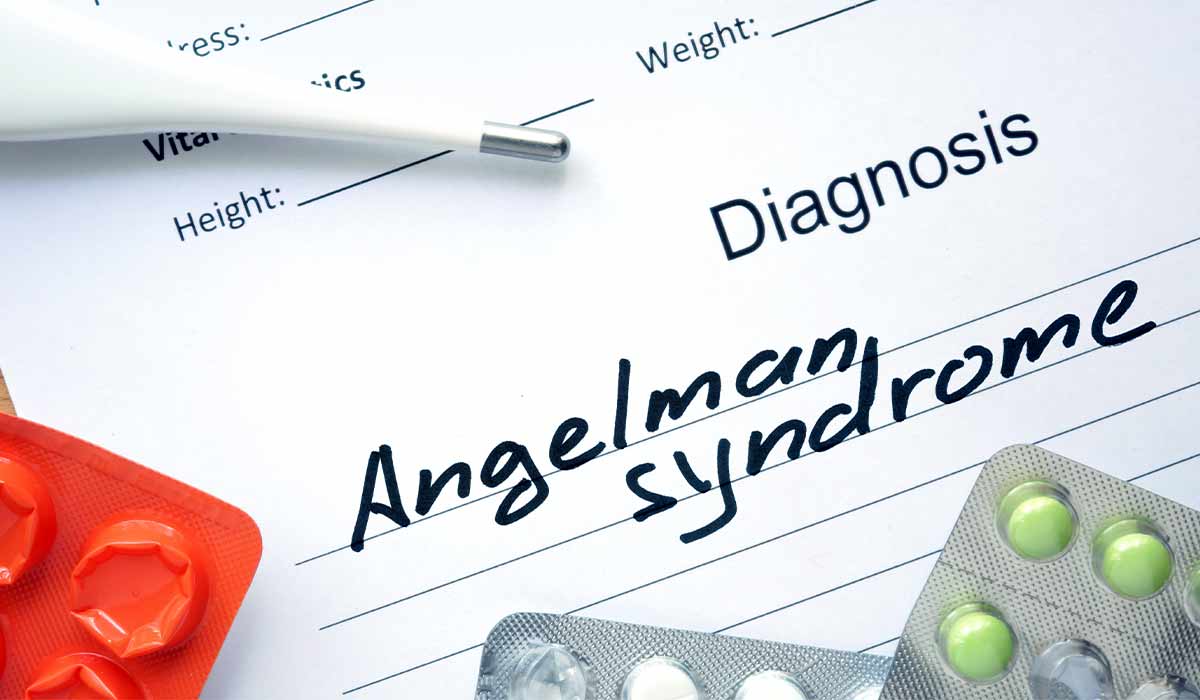
Angelman syndrome is a neurogenetic disorder that is often misdiagnosed. Find out what the characteristic symptoms are and learn about… read more »

Papaya, a fruit cherished for its flavor and health benefits, offers a variety of culinary options for incorporating it into… read more »
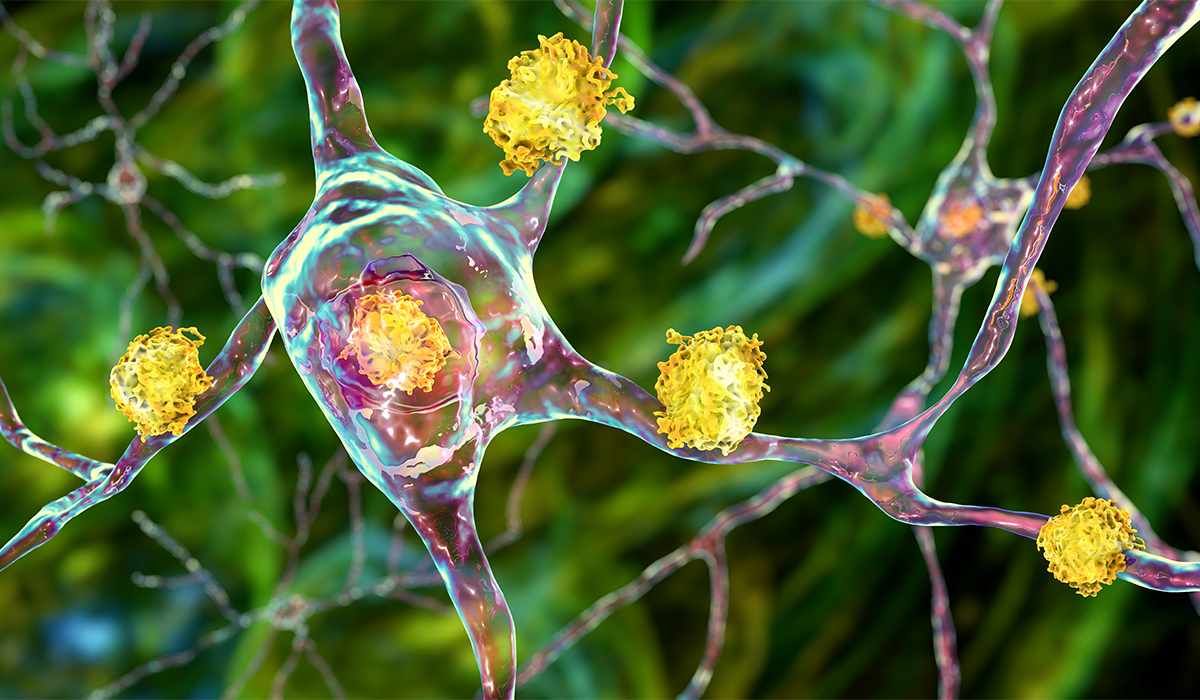
Huntington's disease is genetically determined. No effective cure has yet been developed, but research into modern treatments is ongoing. Learn… read more »

Pumpkin is a popular plant that has benefited people for years. Find out how pumpkin affects health and its calorie… read more »
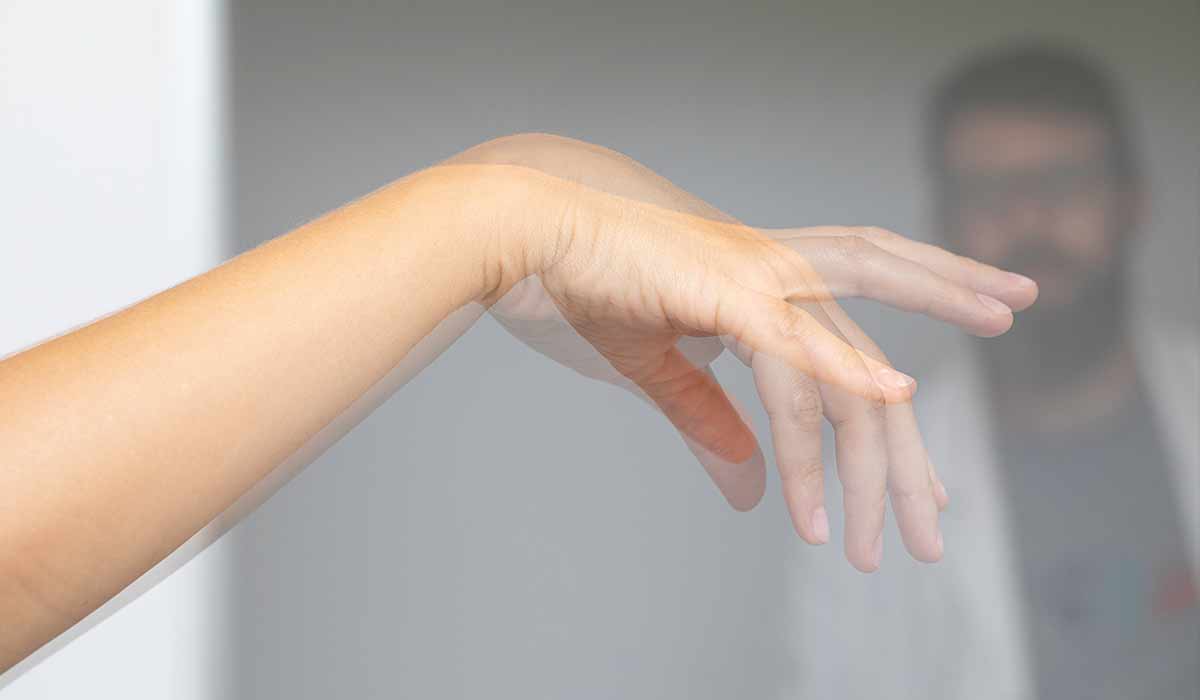
Ataxia is a motor coordination issue when individuals struggle with exact movements, holding the correct posture, or having standard walking… read more »

Tennis elbow is a syndrome of the lateral epicondyle of the humerus. It is characterized by pain in the elbow… read more »

Scurvy is a disease caused by vitamin C deficiency. Its symptoms include bleeding gums, and treatment involves taking preparations with… read more »

Muscle pain and stiffness – these can be the first symptoms of arthritis. Learn about the most common types of… read more »